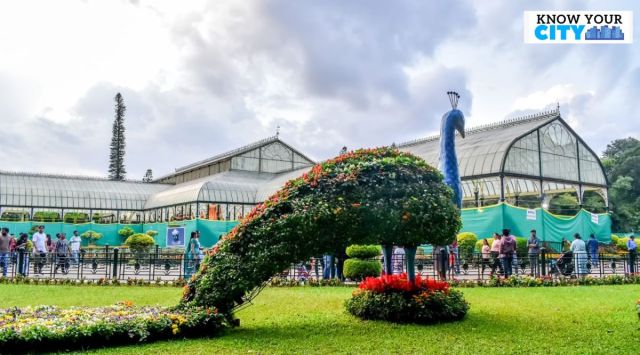Know Your City: Biannual flower show is back in Bengaluru’s Lalbagh, what is its history?
The Lalbagh Glass House was inspired by the Crystal Palace in London's Hyde Park and completed in 1890. This time, the theme is the Vidhana Soudha and the legacy of the second chief minister of Karnataka, Kengal Hanumanthiah.
 Flower shows at the Kew Gardens in England had been going on since at least the early 1800s, with the gardens themselves dating back to 1759. (Express Photo)
Flower shows at the Kew Gardens in England had been going on since at least the early 1800s, with the gardens themselves dating back to 1759. (Express Photo) Among the long-time fixtures of modern Bengaluru are the Biannual flower shows of Lalbagh. Their legacy stretches back to times preceding World War I, interrupted only by World War II and the Covid pandemic.
The tradition is, in turn, rooted in the flower shows of England, with many of Lalbagh’s supervisors having worked or studied at the Kew Gardens in England – such as H C Javaraya and his mentor, the German botanist G H Krumbiegel.
Lalbagh historian and author Suresh Jayaram said, “The first flower shows happened near the bandstand….only after the Glass House was built, the flower shows were moved into the Glass House. An important question is why people wanted to have flower shows. One is that they wanted to encourage people to grow flowers, vegetables, and fruits. The directors, who were Kew-trained, wanted to encourage the idea of home gardens and also how one could create the idea of competition with the floral arrangements.”
Flower shows at the Kew Gardens in England had been going on since at least the early 1800s, with the gardens themselves dating back to 1759.
 Express Photo by Jitendra M.
Express Photo by Jitendra M.
The flower shows in Bengaluru that would have been originally linked to the seasonal growth of flowers are now timed to coincide with Independence Day and Republic Day. While the Biannual flower shows have been a fixture since 1912, they were by no means the first flower shows in Lalbagh.
For instance, Jayaram mentions in his book Bangalore’s Lalbagh: A Chronicle of the Garden and City that flower shows were held as early as early as in 1869 and 1970, alongside livestock exhibitions, including poultry, cattle, and Mysore pedigree horses.
The innovation did not stop there – in 1912, superintendent GH Krumbiegel organised a floral bicycle parade of young girls, including his daughter Hilda. Over a century ago, Krumbiegel realised that the flower show would go far.
Jayaram quotes Krumbiegel, “The value of Bangalore Flower shows in spreading and stimulating horticultural work among private gardens needs no elaboration, and Government as well as the public also realise the work it involves….”
The Lalbagh Glass House, completed in 1890 and inspired by the Crystal Palace in London’s Hyde Park, was originally intended, as other Victorian glass houses were — to display exotic plants from the tropics. But being located in India, an enclosed conservatory might have proved redundant.
 Express Photo by Jitendra M.
Express Photo by Jitendra M.
According to Jayaram, the sides of the Glass House were once covered with creeper-laden wooden trellises, which were later removed to keep the structure cool. Today, the Glass House is best known as the home of the flower shows. More recently, the Glass House was refurbished from 2002-03, with glass panels installed to, as V R Thiruvady notes it in his book Lalbagh: Sultans’ Garden to Public Park, “to keep the flowers and other exhibits fresh for ten days during the biannual flower shows”.
This time, the theme is the Vidhana Soudha and the legacy of the second chief minister of Karnataka, Kengal Hanumanthiah, represented by an immense floral model of the Vidhana Soudha, made of hundreds of thousands of flowers, including lilies, petunias and roses, to name a few. According to Mansoor Ali of the Bengaluru by Foot walking tours, PSUs such as Hindustan Machine Tools and BHEL develop their own exhibits for the show.
So, over a century after an English prince laid the foundation stone of the Glass House, a Bengaluru tradition continues unabated.







